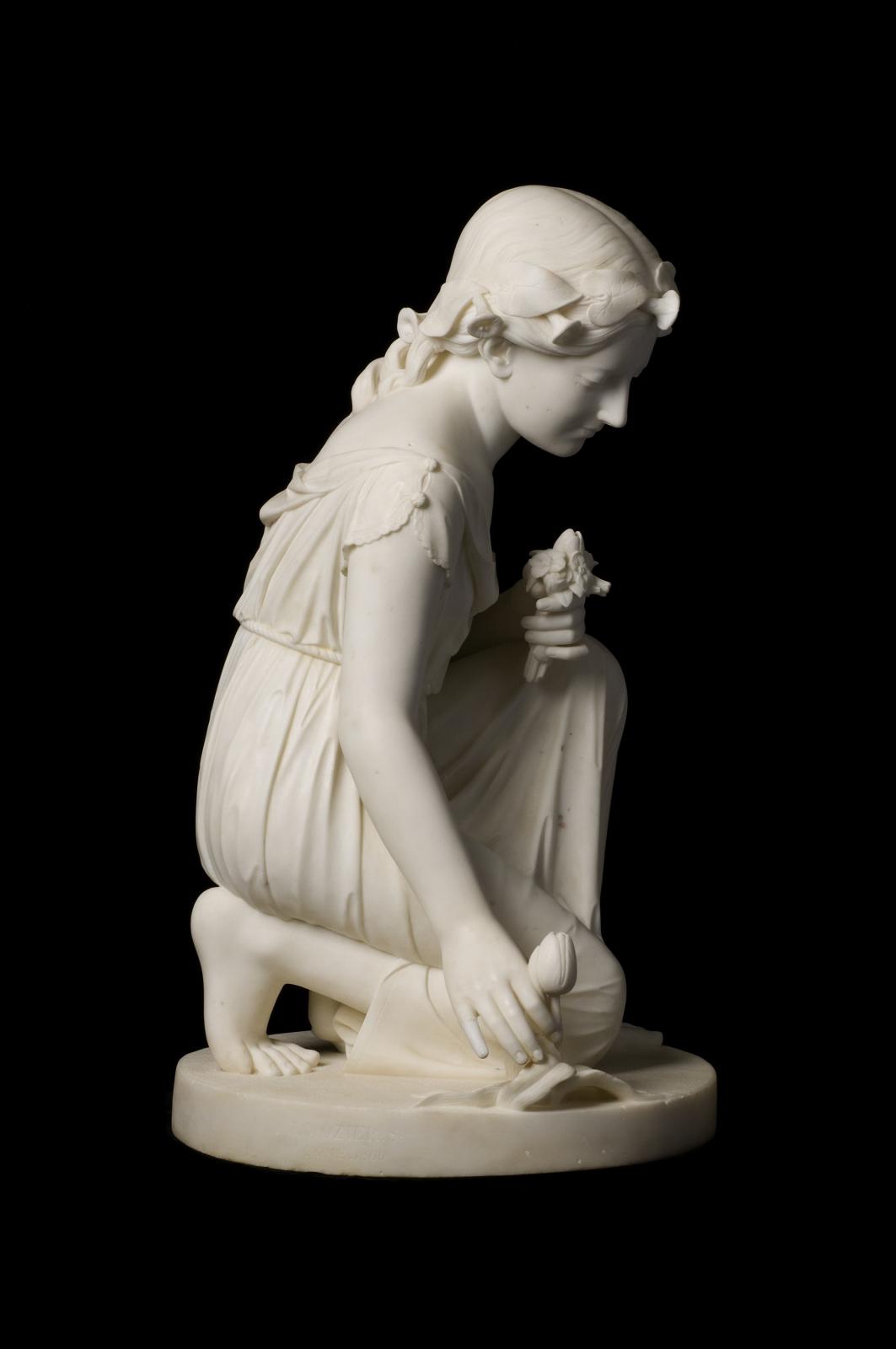artist
Mozier was part of a circle of American Neoclassical marble carvers in Florence, Italy that included Powers, Greenough and Ives. Shortly after 1845, Mozier moved his family to Florence and took lessons under Hiram Powers. This relationship did not end well and Mozier shifted to Rome, where American Thomas Crawford was working.
Mozier is often noted for his very American oriented themes in his major works, such as Pocahontas and The Wept of Wish-ton-Wish which is derived from James Fenimore Cooper’s 1829 romance novel. His Prodigal Son at the Pennsylvania Academy of Fine Arts and Undine at Yale University are amongst some of his most noted works and stand as singular in the history of American marble works.







